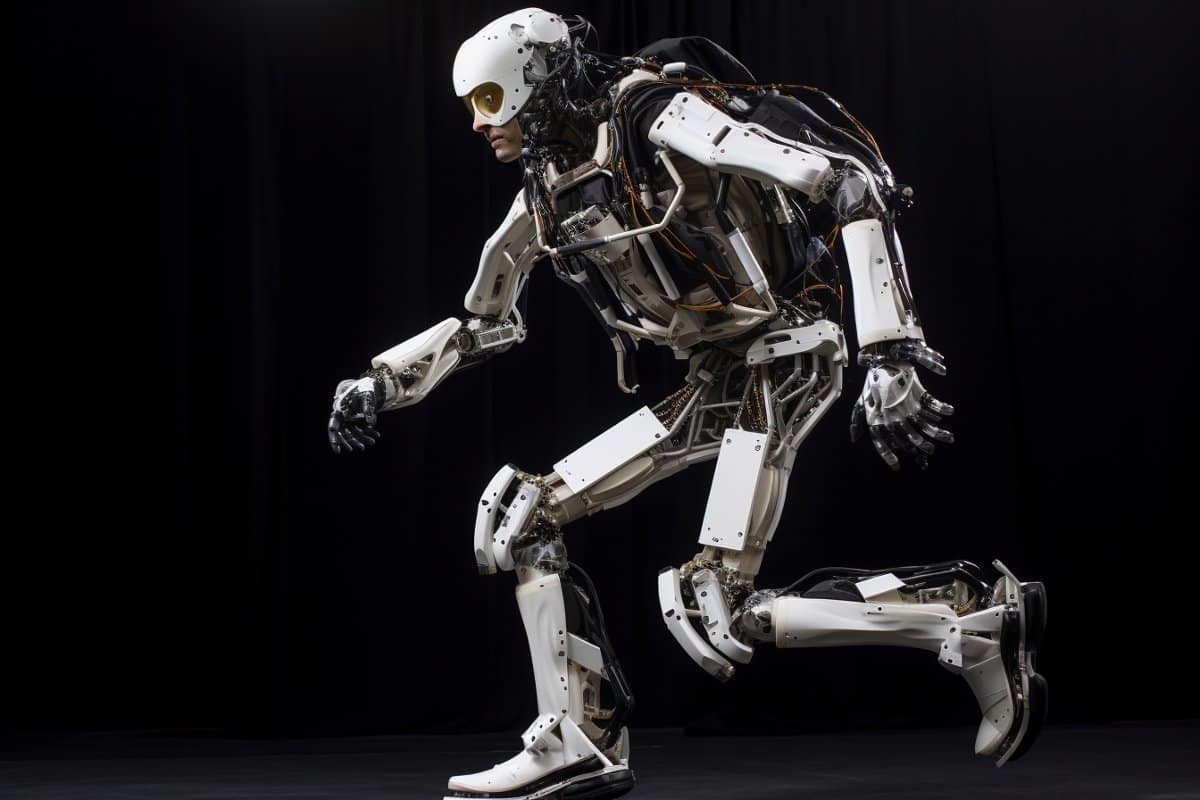summary: Researchers have made a major advance in robotics by replicating human-like variable-speed walking using a musculoskeletal model. This model, guided by a reflex control method similar to the human nervous system, advances our understanding of human movement and sets new standards for robotic technology.
The study used an innovative algorithm to improve energy efficiency across different walking speeds. This breakthrough paves the way for future innovations in bipedal robots, prosthetics, and powered exoskeletons.
Key facts:
- The Tohoku University team has successfully replicated human walking mechanics in a robotic model, reflecting the complexity of the human musculoskeletal and nervous systems.
- An advanced algorithm is developed to improve energy efficiency, which is essential for replicating the natural variable-speed walking of humans.
- This research holds huge potential for advancements in bipedal robots, prosthetics, and powered exoskeletons, improving everyday mobility and robotics solutions.
source: Tohoku University
We usually don't think about it while doing it, but walking is a complex task. Bones, joints, muscles, tendons, ligaments, and other connective tissues (i.e., the musculoskeletal system), controlled by our nervous system, must move in coordination and respond to unexpected changes or disturbances at varying speeds and in a highly efficient manner. Replicating this in robotic technologies is no easy feat.
Now, a research group from Tohoku University's Graduate School of Engineering has replicated human-like variable-speed walking using a musculoskeletal model—one that is guided by a reflex control method that mirrors the human nervous system. This breakthrough in biomechanics and robotics sets a new standard for understanding human movement and paves the way for innovative robotics technologies.

Details of their study were published in the journal PLoS Computational Biology On January 19, 2024.
“Our study addressed the complex challenge of replicating effective walking at different speeds – a cornerstone of the human walking mechanism,” says Associate Professor Dai Aoaki, co-author of the study with Shunsuke Koseki and Professor Mitsuhiro Hayashibe.
“These ideas are pivotal in pushing the boundaries in understanding human movement, adaptation, and efficiency.”
The achievement was thanks to an innovative algorithm. The algorithm evolved beyond the traditional least squares method and helped devise an improved neural circuit model for achieving energy efficiency across diverse walking speeds.
Extensive analysis of these neural circuits, especially those controlling muscles in the leg swing phase, has revealed important elements of energy-efficient walking strategies. These discoveries advance our understanding of the complex neural network mechanisms that support human gait and its efficiency.
Awaki emphasizes that the knowledge revealed in the study will help lay the foundation for future technological progress.
“The successful simulation of walking at variable speeds in a musculoskeletal model, combined with sophisticated neural circuits, represents a pivotal advance in the integration of neuroscience, biomechanics, and robotics. It will revolutionize the design and development of high-performance bipedal robots, advanced prosthetics, and advanced exoskeletons that Powered.
Such developments can improve mobility solutions for individuals with disabilities and advance robotic technologies used in everyday life.
Looking to the future, Awaki and his team hope to further improve the reflex control framework to recreate a wider range of human walking speeds and movements. They also plan to apply insights and algorithms from the study to create more adaptive and energy-efficient prosthetics, powered suits, and bipedal robots. This involves integrating specific neural circuits into these applications to enhance their functionality and naturalness of movement.
About this robotics research news
author: Public relations
source: Tohoku University
communication: Public Relations – Tohoku University
picture: Image credited to Neuroscience News
Original search: Open access.
“Identifying key factors for energy-efficient gait control across a wide range of speeds in reflex-based musculoskeletal systems“By Dai Aoaki et al. PLOS Computational Biology
a summary
Identifying key factors for energy-efficient gait control across a wide range of speeds in reflex-based musculoskeletal systems
Humans can generate and maintain a wide range of walking speeds while improving their energy efficiency. Understanding the complex mechanisms that govern human walking will contribute to engineering applications such as energy-efficient bipedal robots and walking assistive devices. Reflex-based control mechanisms, which generate motor patterns in response to sensory feedback, have shown promise in generating human-like gait in musculoskeletal models.
However, precise speed regulation remains a major challenge. This limitation makes it difficult to identify reflex circuits essential for energy-efficient walking. To explore the reflex control mechanism and gain a better understanding of the energy-efficient maintenance mechanism, we extended the reflex-based control system to enable controlled walking speeds based on target speeds.
We have developed a novel performance-weighted least squares (PWLS) method to design a parameter modulator that improves walking efficiency while maintaining the target speed for a reflex-based bipedal system.
We successfully generated walking gaits from 0.7 to 1.6 m/s in a 2D musculoskeletal model based on target velocity for input into the simulation environment. Our detailed analysis of the parameter modulator in an inversion-based system revealed two main inversion circuits that have a significant impact on energy efficiency.
Furthermore, it was confirmed that this result is not affected by the setting of the parameters, i.e. leg length, sensory time delay and weight coefficients in the objective cost function.
These findings provide a powerful tool for exploring the neural bases of movement control while highlighting the complex mechanisms underlying human walking and hold great potential for practical engineering applications.

“Beer aficionado. Gamer. Alcohol fanatic. Evil food trailblazer. Avid bacon maven.”
